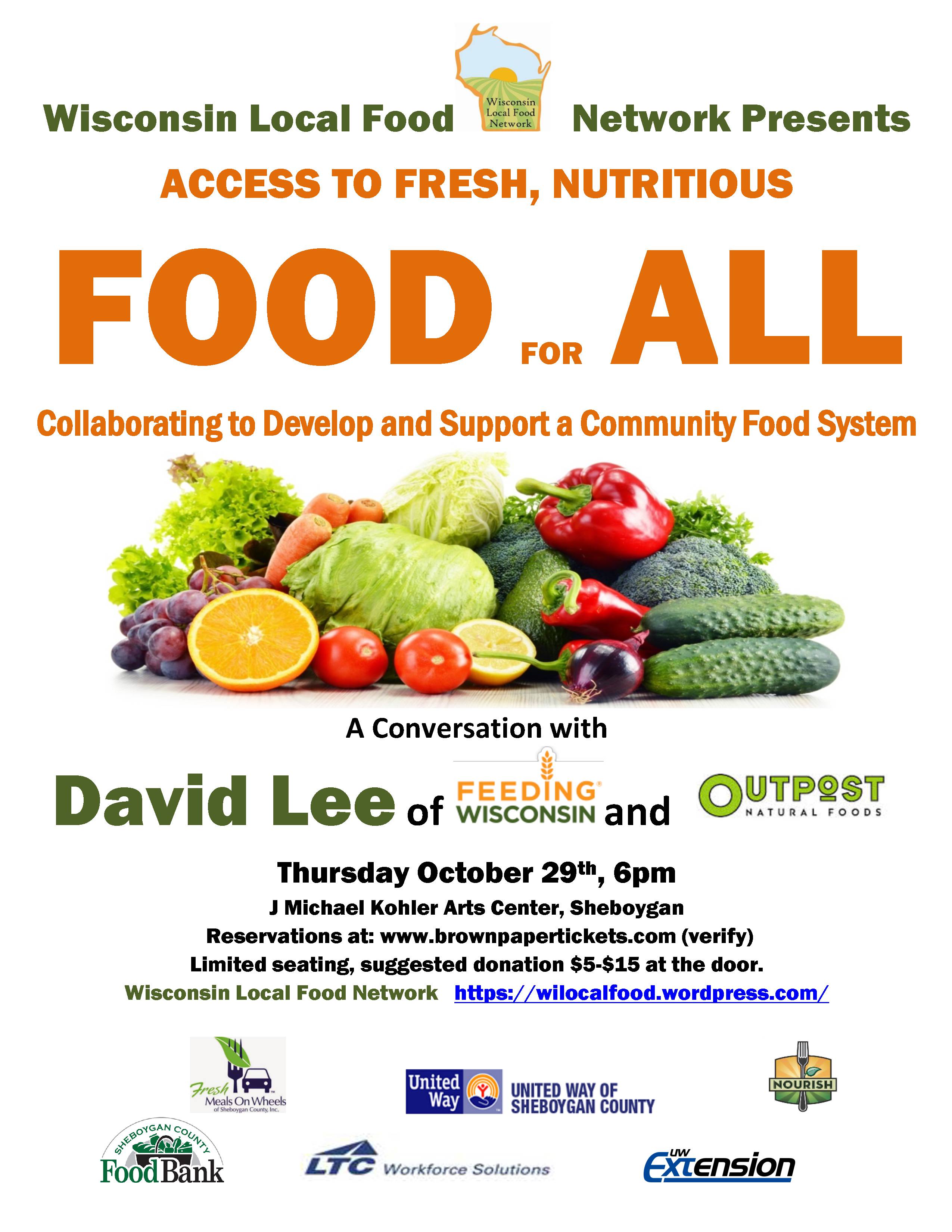Creating a more equitable food system
| CommentsToday was one of those kinds of days that I am lucky to have in my job. In the morning, I was in Mineral Point visiting our friends at the Wisconsin Innovation Kitchen (WINK) to hammer out some details in our partnership to extend the life of fresh, donated food from farmers and from the retail end.
WINK's partnership with the Hodan Center, where they not only provide a stream of funding but also meaningful work opportunities for the center's clients, is truly transformative and inspiring. I can't help but think that with more of the small to mid-tier processing outfits that also double as social enterprises, we would be able to more efficiently capture and preserve agricultural surplus for distribution.
 Afterward, I hightailed it clear across the state to Sheboygan to keynote, “Access to Fresh, Nutritious Food for All,” a Wisconsin Local Food Network discussion at the John Michael Kohler Arts Center.
Afterward, I hightailed it clear across the state to Sheboygan to keynote, “Access to Fresh, Nutritious Food for All,” a Wisconsin Local Food Network discussion at the John Michael Kohler Arts Center.
It was great to meet some of the local stakeholders – The Lakeshore Local Food Network (LLFN), the Sheboygan County Food Bank, Nourish Farms, the United Way of Sheboygan County, and many others – to learn about their collaboration through LLFN to create a more access to healthy food in the Lakeshore area. This is hard work and it was inspiring to hear about how they have engaged stakeholders and formulated their local plan to address the issue.
My talk was structured around my story of how I went from being a rural romantic to being a food advocate and hunger fighter and how, through this transformation, I’ve come to understand the challenges and opportunities in the quest for a better, more equitable food system.
In a nutshell, the “good food,” which I broadly define as food that is nutritious, produced and sold at fair prices, and good for people and the environment, is unfortunately still too costly for far too many people, including many of the people who grow it.
Creating a more equitable food system, one that provides good food for all in the 21st century, will require individuals and organizations to overcome the narcissism of small differences, which bedevils the development of the truly transformative partnerships that are necessary for a unified food movement.
And perhaps more importantly, for such a movement to really be effective it has to ensure that the people impacted by the lack of access to good food are also included at the table. It’s one thing to have advocates, professionals, and “experts” brainstorm and craft what an equitable food system looks like, but it’s completely another to have that ideal system be relevant and valuable to people living without access to good food. The people with the lived experiences are the real experts.
Food is incredibly powerful. It has the power to transform and build communities and it also has the power to divide and oppress. History is pretty clear about both of these points: great civilizations and cultures developed anywhere people could grow, cultivate, and share food and on the other hand, the production and consumption of food has been used to enslave and divide people, leading to disconnected and fragmented communities. In creating a more equitable food system, our challenge is to find a way to minimize its power to divide and hurt people and maximize its power to foster connections and heal communities.
